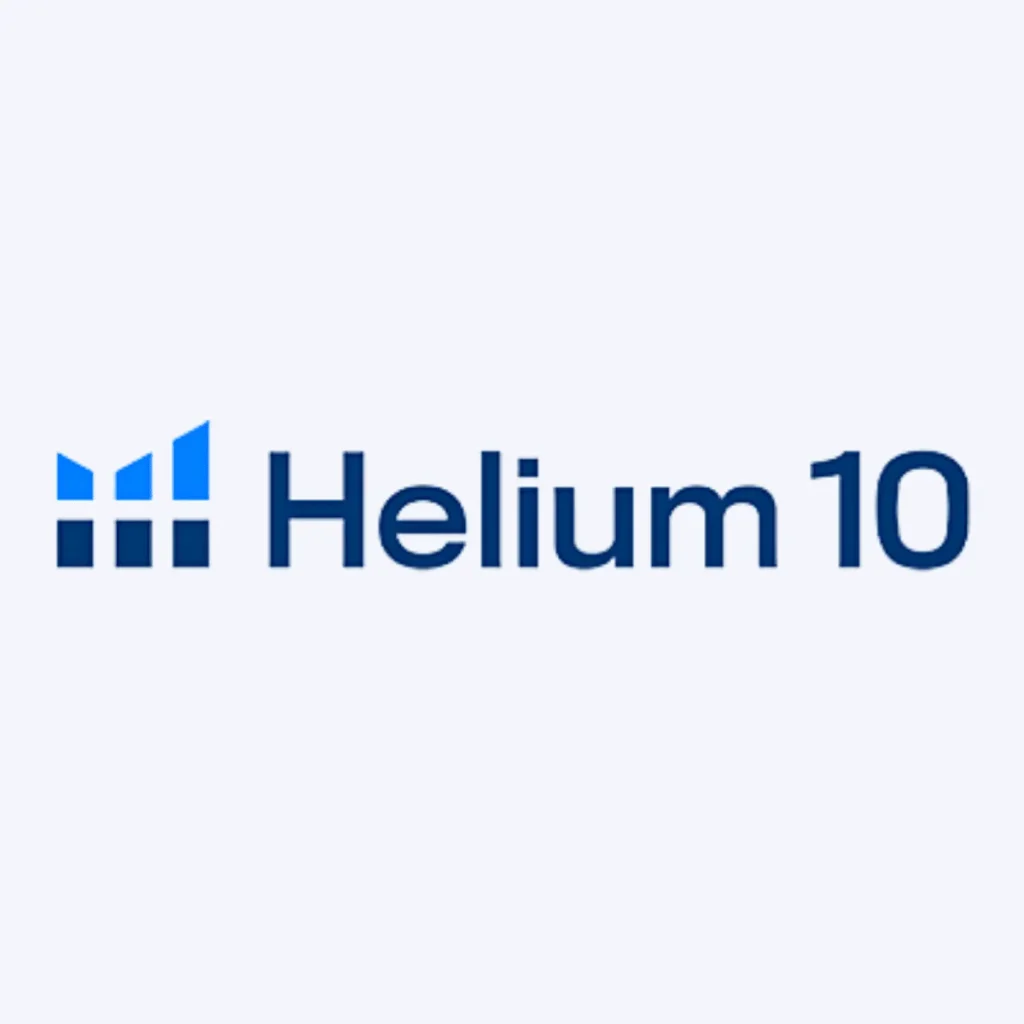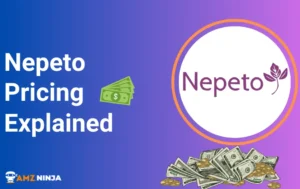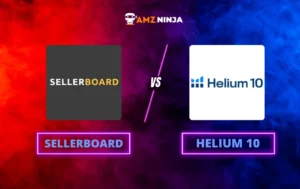Are you struggling to rise above the Amazon marketplace noise?
If you're not strategically combining Amazon PPC and organic tactics, you're likely missing out on valuable sales. PPC gives your products an immediate visibility boost, but a strong organic presence establishes long-term authority. Want to learn how to balance these tactics to propel your Amazon sales to new heights?
Balancing these approaches is not just beneficial but essential for maximizing sales and solidifying your brand's footprint on Amazon. This article delves into the synergy of Amazon's PPC and organic strategies, guiding sellers on leveraging both to achieve unparalleled success.
Amazon PPC Vs Organic Strategies
Let's have a quick look at Amazon PPC Vs Organic Strategies. The what, how, and why of these most prominent practices on the go.
The Basics of Amazon PPC

Amazon PPC is an advertising model where sellers pay a fee to Amazon each time a shopper clicks on their ad. This method of gaining visibility is crucial for new products or brands that need to establish a presence quickly on the platform. Amazon PPC operates on a bidding system, where sellers set a maximum bid for their ads based on keywords or products.
The primary advantage of Amazon PPC is immediate visibility. By bidding on relevant keywords, sellers can position their products in front of potential buyers right when they are ready to make a purchase. However, this comes at a cost.
Fundamentals of Amazon Organic Search
Organic search, on the other hand, refers to the natural ranking of products based on Amazon's search algorithm. Unlike PPC, organic listings do not incur direct costs per click or impression. To rank higher organically, sellers must optimize their product listings with relevant keywords, high-quality images, and compelling content that aligns with what Amazon shoppers are searching for.
Studies have shown that organic search accounts for a significant portion of traffic, with about 70% of the overall click share. Moreover, the first three products that appear organically in an Amazon search result capture 64% of clicks, underscoring the importance of organic ranking on the platform.
1. Click-Through and Conversion Rates
Understanding the behavior of potential customers through click-through and conversion rates is vital for any Amazon seller. These metrics can illuminate the effectiveness of both Amazon Pay-Per-Click (PPC) campaigns and organic search strategies.
PPC vs Organic Click-Throughs
Click-through rate (CTR) is a critical metric in assessing the performance of Amazon PPC and organic listings. It measures the percentage of people who click on a listing after seeing it.
A study found that a substantial 71.33% of searches resulted in a click on an organic search result, while paid ads accounted for only 15.81% of clicks. This suggests that while Amazon PPC can provide immediate visibility, organic search remains a dominant force in attracting clicks from customers.
Moreover, when considering the overall traffic share, organic search commands an impressive 70% compared to paid search's 10%, highlighting the significant role that organic search plays in driving traffic. However, on Amazon's platform, Sponsored Products (PPC) have been observed to secure a higher click-through rate of around 50-60%, with the remaining 40-50% going to organic results.
This discrepancy between general search engine behavior and Amazon's marketplace underscores the importance of tailoring strategies to the specific platform in question.
| Source | Click-Through Rate (CTR) |
|---|---|
| Organic Search Results | 71.33% |
| Paid Search Ads | 15.81% |
| Amazon Sponsored Products | 50-60% (PPC) |
Conversions: Amazon PPC Vs Organic Strategies
Conversion rates, representing the percentage of click-throughs that result in a purchase, are the ultimate measure of success for Amazon sellers. While click-through rates are important, conversions are what contribute to the bottom line.
The presence of both paid and organic results can influence consumer behavior. According to WebFX, organic search results on the first page are 8.5 times more likely to be clicked on than paid search results, which can imply a higher level of trust in organic listings that may translate to better conversion rates.
However, it's important to note that Amazon PPC campaigns offer the advantage of targeting specific customer searches, which can lead to a more qualified lead and potentially higher conversion rates.
2. The Impact of PPC on Visibility
Amazon sellers need to understand the differing impacts of PPC (Pay-Per-Click) and organic strategies on product visibility. Each approach has unique benefits and can influence the success of a product in Amazon's competitive marketplace.
Immediate Visibility with PPC
Amazon PPC offers sellers immediate product visibility by placing ads at the top of search results, ideal for new launches or gaining quick exposure. These ads can significantly increase clicks and sales. Sellers must manage their PPC costs carefully, using tools like ACoS and ROAS calculators to track campaign performance and ensure profitability.
Long-Term Growth with Organic
Organic search results on Amazon are unpaid listings that rank due to relevance to search terms, offering long-term growth and cost efficiency. Unlike PPC, organic strategies require optimization but no direct costs. Organic results attract the majority of clicks, with the top three products receiving 64% of clicks.
Enhancing organic visibility involves SEO practices like optimizing titles, descriptions, and using high-volume keywords. Customer reviews also significantly impact organic rankings, emphasizing the need for sellers to manage their online reputation effectively.
3. Balancing Cost and Effectiveness

For Amazon sellers, it's critical to weigh the importance of cost against the efficacy of marketing strategies. Both Amazon Pay-Per-Click (PPC) and organic search optimization play pivotal roles in a seller's success, but they come with different considerations regarding budget and long-term value.
PPC Budget Considerations
When engaging in Amazon PPC campaigns, sellers should be aware of the financial implications. The cost of Amazon PPC ads operates on a second-price auction model, meaning the highest bidder pays only one cent more than the next highest bid. This system necessitates strategic bidding to manage expenses effectively while remaining competitive.
The average cost per click for PPC on Amazon fluctuates between $0.10 to $6.00 USD, which underscores the need for sellers to carefully plan their advertising budget.
PPC campaigns offer the advantage of immediate traffic and increased sales velocity, which can be particularly useful for new product launches or items that currently have low organic visibility. However, they can be more costly in the short term, which requires careful monitoring and adjustment to ensure profitability.
Organic SEO: A Cost-Efficient Strategy
In contrast to PPC, organic search optimization on Amazon is a more cost-efficient approach that focuses on building brand trust, customer loyalty, and sustainable sales. Organic sales may take longer to develop, but they reduce costs over time and contribute to a brand's reputation and customer retention.
Organic strategies involve optimizing product listings with relevant keywords, high-quality images, and persuasive sales copy to naturally rank higher in Amazon search results. While there is no direct cost for organic clicks, the investment in content creation and SEO must be factored into the overall strategy.
Using Helium 10 for Amazon PPC and Organic Strategies

Using Helium 10 for Amazon PPC and Organic Strategies can be a game-changer for sellers aiming to boost their visibility and sales. For PPC, Helium 10's suite of tools, including the PPC Audit Tool named Adtomic, offers a deep dive into your campaigns, helping identify areas of wasteful spending and uncovering high-performing keywords. This insight allows for refined targeting and optimization, ensuring your ads reach the most relevant audience with the potential for higher conversion rates.
On the organic side, Helium 10's Cerebro tool is invaluable for understanding how you stack up against competitors in keyword rankings. By analyzing the organic keywords your competitors are winning on, you can adjust your own listing's SEO strategy to improve your rankings. This involves optimizing your product listings with those high-impact keywords, which can significantly enhance your visibility and organic search performance on Amazon.
Moreover, Helium 10's keyword research tools, Magnet and Cerebro, provide a wealth of data on search volume, trends, and competitor keyword strategies. This information is crucial for both PPC and organic strategies, as it helps sellers identify the most relevant and high-traffic keywords to target. By incorporating these insights into your Amazon listings and PPC campaigns, you can significantly increase your product's discoverability and appeal to a broader audience.

20% Off Helium 10 Coupon Code
exclusive
Use the coupon code “BLOGE6M20” to get 20% Off for the first six months on Helium 10. Limited period offer.
SAVE 20%
Helium 10 equips Amazon sellers with the tools and data needed to fine-tune their PPC and organic strategies, driving more traffic, improving conversion rates, and ultimately boosting sales.
Integrating Amazon PPC with Organic Strategies
In the competitive Amazon marketplace, sellers can maximize visibility and sales by integrating PPC and organic strategies. PPC offers immediate visibility and data on customer behavior, beneficial for new products or brands. Organic strategies build long-term growth and brand trust, crucial for sustained success. By targeting both ad-clicking shoppers and those preferring organic listings, sellers can leverage the strengths of both methods.
A balanced approach between PPC and organic efforts is essential for a successful long-term sales strategy. PPC can boost products during competitive seasons or product launches, while organic efforts should focus on optimizing product listings with relevant keywords and customer reviews to enhance organic rank. Continuous monitoring and adjustment of PPC strategies, alongside nurturing organic growth through SEO best practices, create a dynamic Amazon presence.
Optimizing Amazon PPC Campaigns (Guide)
To streamline your Amazon PPC campaigns and harmonize them with organic strategies for enhanced visibility and sales, consider the following key points:
Keyword Targeting for PPC Success
Begin with thorough keyword research to identify relevant and high-converting keywords. Use tools like Amazon’s Keyword Tool, Helium 10, or Jungle Scout Chrome extension for insights into both short-tail and long-tail keywords. Aim to mix primary, secondary, and long-tail keywords for a broad yet targeted approach.
Optimizing Product Listings
Enhance your product listings to attract both PPC-driven and organic traffic. This includes:
- Title Optimization: Incorporate primary and secondary keywords.
- Bullet Points: Highlight key features and benefits, using relevant keywords.
- Product Descriptions: Provide detailed, value-rich descriptions with keywords.
- Backend Keywords: Use Amazon's backend section for additional relevant terms.
Monitoring and Adjusting Bids
Regularly review campaign metrics (CTR, conversion rates, ROAS) to identify improvement areas. Adjust bids based on performance, experimenting with different match types for optimal reach and relevancy.
Leveraging Organic Strategies for Growth
Leveraging organic strategies is critical for sustainable long-term growth on Amazon., consider these key points:
Optimization Tools for Amazon Success
To effectively optimize Amazon PPC and organic strategies, sellers can leverage a variety of tools designed to enhance the performance and profitability of their campaigns. Here's a concise overview of the tools mentioned and their contributions to optimization efforts:
1. ACoS Calculators
ACoS calculators help sellers quickly understand their campaign's Advertising Cost of Sale, providing an instant overview of ad spend efficiency. This tool is crucial for making informed decisions about PPC campaigns, ensuring advertising costs are justified by the sales generated.
2. ROAS Calculators
ROAS calculators assist sellers in evaluating the profitability of their PPC campaigns by comparing the revenue generated from ads to the cost of those ads. This tool is essential for determining the overall effectiveness of PPC strategies and making adjustments for better returns on investment.
3. Keyword Research Extensions
Keyword research is fundamental to both PPC and organic search optimization. Tools like the Zoof Chrome Extension and Jungle Scout Chrome Extension provide insights into high-performing keywords, competitor analysis, and market trends, vital for optimizing product listings and ad campaigns.
- Zoof Chrome Extension: Useful for real-time bid adjustments and campaign insights, helping sellers stay agile in the dynamic Amazon marketplace.
- Jungle Scout Chrome Extension: Geared toward analyzing competitor data and enhancing organic product visibility, crucial for listing optimization.
These optimization tools are instrumental in helping sellers balance the immediate impact of PPC with the sustainable growth offered by organic rankings, enabling them to target different types of shoppers, maximize visibility and sales, and achieve long-term success in Amazon's competitive marketplace.
Top FAQs Related to Amazon PPC vs Organic Strategies
Can Amazon PPC campaigns affect organic rankings?
Yes, PPC can enhance organic rankings by showing Amazon's algorithm that a product is popular, potentially leading to higher organic search placement.
Why is keyword research important for both PPC and organic strategies?
Keyword research helps identify relevant and high-converting keywords for targeting in PPC campaigns and optimizing product listings, crucial for both immediate visibility and organic growth.
Should sellers focus on PPC or organic strategies?
Sellers should use a balanced approach, leveraging both PPC for immediate visibility and organic strategies for long-term growth.
How can sellers balance PPC and organic strategies effectively?
Sellers can balance PPC and organic strategies by leveraging PPC for immediate visibility and focusing on organic growth for long-term brand trust and cost efficiency, continuously adjusting based on performance data.
How do PPC and organic strategies differ in terms of cost?
PPC incurs costs per click, requiring careful budget management. Organic strategies, while requiring time and effort for optimization, do not incur direct costs per click, making them more cost-efficient in the long run.
How does the click-through rate (CTR) compare between PPC and organic search results?
While PPC ads can provide a higher CTR on Amazon, organic search results generally attract a significant portion of clicks, highlighting the importance of optimizing for both.
What role do customer reviews play in organic ranking?
Customer reviews serve as social proof and can significantly impact a product's organic ranking on Amazon, with positive reviews signaling product popularity and quality to the algorithm.
More Guides from Amz.Ninja
Conclusion
In wrapping up the debate between Amazon PPC and organic strategies, it's clear that both play pivotal roles in a seller's success on the platform. PPC campaigns offer the advantage of immediate visibility, crucial for new products or brands seeking quick exposure. On the other hand, a robust organic presence lays the foundation for long-term growth and brand authority.
The key to maximizing sales and visibility on Amazon lies in striking the right balance between these two approaches. By leveraging PPC for short-term gains and focusing on organic growth for sustainable success, sellers can navigate the competitive landscape of Amazon effectively. Continuous optimization, based on performance data, and a commitment to quality and customer satisfaction will ensure that sellers not only attract but also retain their target audience.
Remember, the integration of PPC and organic strategies is not a one-size-fits-all solution but a dynamic process that requires ongoing adjustment and refinement.







